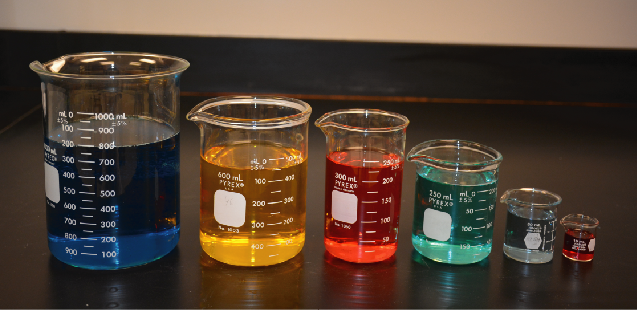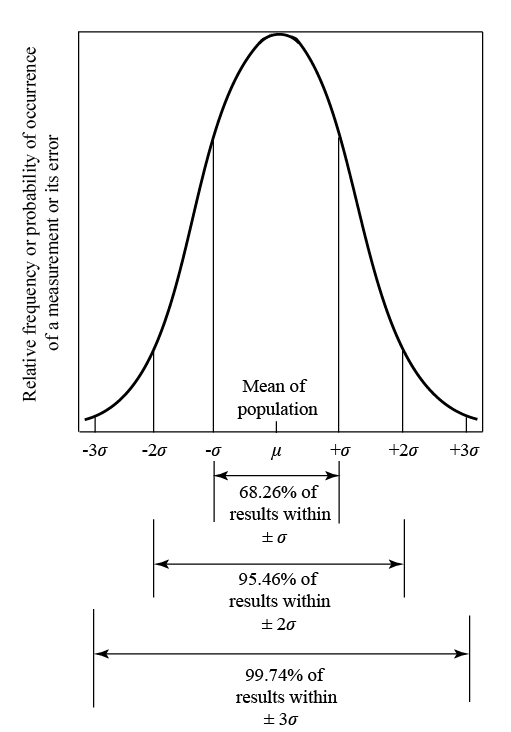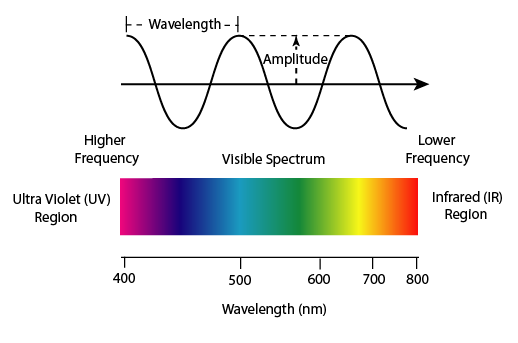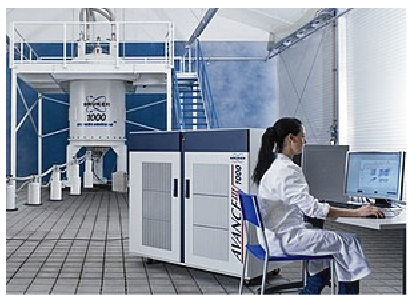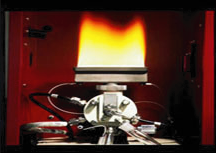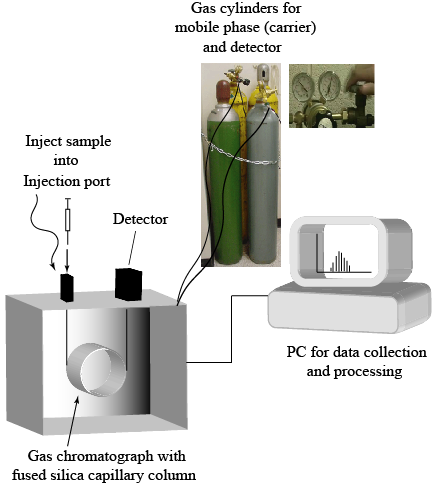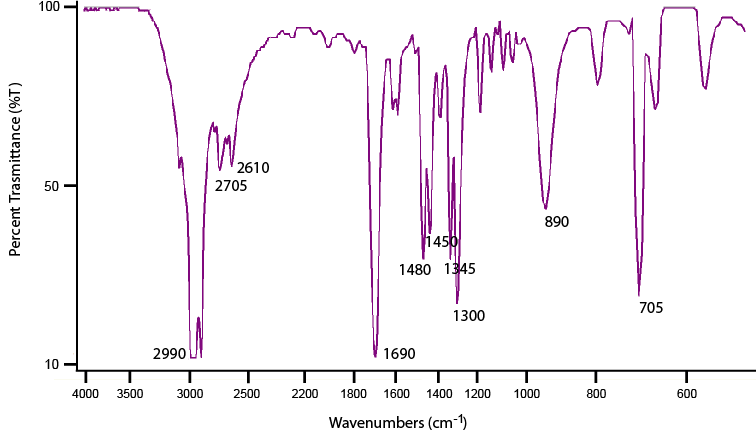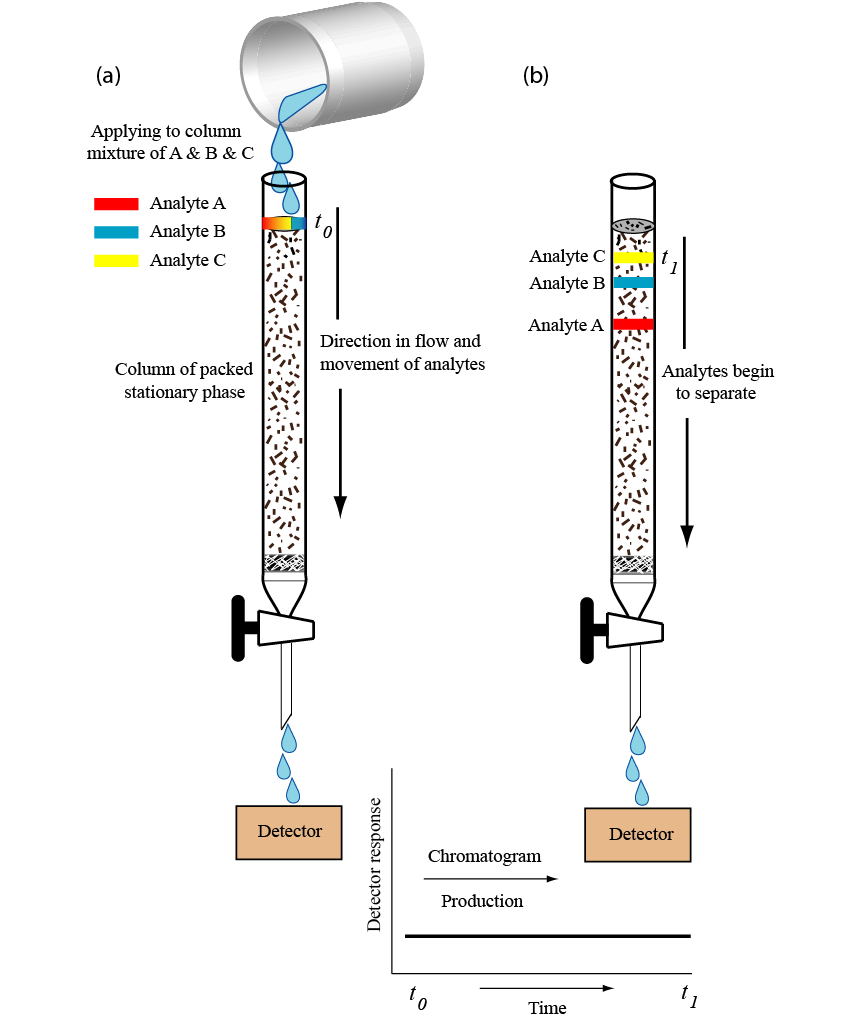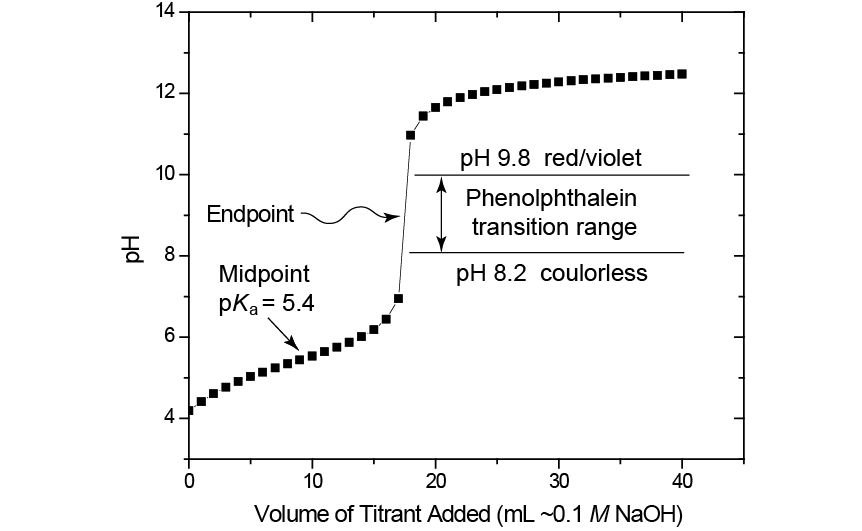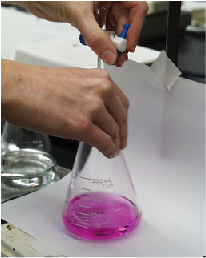CHEMISTRY LABORATORY TECHNIQUES FOR THE CHEMIST AND TECHNICIAN - A COMPREHENSIVE REVIEW
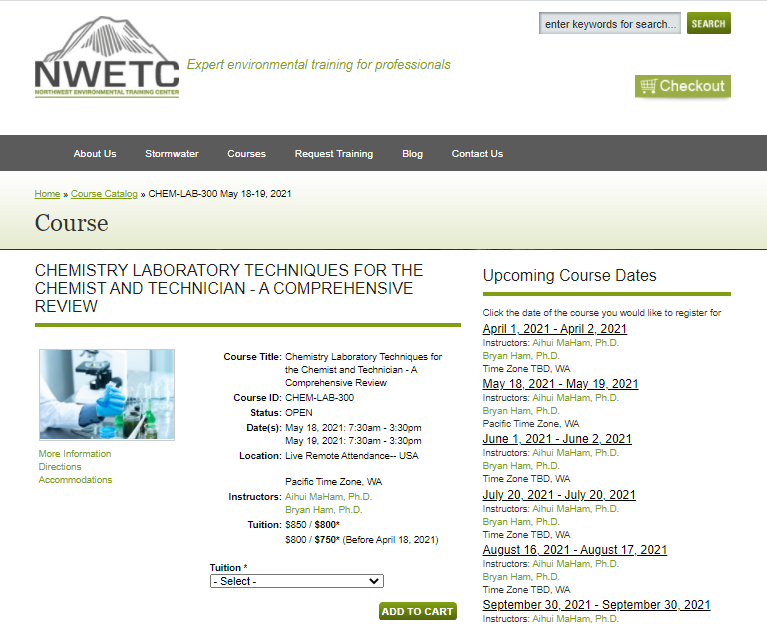 Course Description
Course DescriptionThe objective of the course is to present a survey of analytical chemistry and instrumental analyses. The class begins with an introduction/refresher/review of the laboratory including safety, glassware, basic math, data treatment (statistics), graphing and Excel, lab solutions, acid base theory and titrations. A section is also devoted to the introduction and use of an example of a typical laboratory LIMS program. The course then quickly moves to the theory and application of analytical techniques such as spectroscopy including UV/Vis, fluorescence, FTIR, NMR, and metals analyses including AAS, AMS, XRF and XRD, and then chromatography including HPLC, SPE, TLC, GLC, GC-MS, SCX and CE. The course then completes with a short survey of modern mass spectrometry. The course includes the use of two working programs, the first an example of a typical laboratory LIMS used for sample logging and data input, and the second is a chemist and technicians toolkit used for numerous applications in the lab, for teaching, and for review.
Course Sections
Introduction to the Analytical Laboratory
Chemist and Technician in the Analytical Laboratory
Laboratory Safety
Basic Mathematics in the Laboratory
Analytical Data Treatment (Statistics)
Plotting and Graphing in the Laboratory
Introduction to Microsoft Excel
Laboratory Solutions
Making Laboratory Solutions
Normality
Molarity
Acid Base Theory and Buffer Solutions
Titration as an Analytical Technique
Electrochemistry Introduction
Laboratory Information Management System (LIMS)
Intro to a working LIMS
Logging in samples
Data recording
Sample searching
Approving, archiving, and reporting samples
Spectroscopy
Ultraviolet/Visible (UV/Vis) Absorption Spectroscopy
Fluorescence Optical Emission Spectroscopy
Fourier Transform Infrared Spectroscopy (FTIR)
Nuclear Magnetic Resonance Spectroscopy (NMR)
Atomic Absorption Spectroscopy (AAS)
Atomic Emission Spectroscopy (AES)
Atomic Mass Spectrometry
X-ray Fluorescence (XRF) and X-ray Diffraction (XRD)
Chromatography - Introduction and Theory
High Performance Liquid Chromatography (HPLC)
Solid Phase Extraction (SPE)
Thin Layer Chromatography (TLC)
Gas Liquid Chromatography (GLC)
Gas Chromatography-Mass Spectrometry (GC-MS)
Strong Cation Exchange (SCX) and Capillary Electrophoresis (CE)
Mass Spectrometry Introduction
The class also includes a companion teaching, reference, and toolkit program called ChemTech-ToolKit.
Course Outline
The course is an introductory and refresher/review course to the chemistry laboratory including a survey of analytical chemistry and instrumental analyses in conjunction with a computer based toolkit program called ChemTech-ToolKit, and a Laboratory Information Management System LIMS program. The class begins with an introduction/refresher/review of the laboratory including safety, glassware, basic math, data treatment (statistics), graphing and Excel, lab solutions, acid base theory and titrations. A section is also devoted to the introduction and use of an example of a typical laboratory LIMS program. The course then quickly moves to the theory and application of analytical techniques such as spectroscopy including UV/Vis, fluorescence, FTIR, NMR, and metals analyses including AAS, AMS, XRF and XRD, and then chromatography including HPLC, SPE, TLC, GLC, GC-MS, SCX and CE. The course then completes with a short survey of modern mass spectrometry.
The ChemTech program serves as a reference for chemists and technicians and as a teaching guide for lab technicians. The toolkit is accompanied by an analytical chemistry text book. The program features fully functional tutorials that involve user interaction featuring basic math and lab statistics including graphing, making lab solutions and buffers, titrations, and acid-base theory. Instrumental analyses include UV/Vis, Fluorescence, FTIR, NMR, atomic spectroscopy, gas chromatography, liquid chromatography, and mass spectrometry. The use of a LIMS program is also covered including logging in samples, inputting lab test results, searching samples, approving samples, and printing reports and CofA.
Target Audience
There are 350,000 applied chemical technology professionals in the U.S. workforce (American Chemical Society). The course targets chemists, lab technicians, analysts and undergraduate students. Lab managers and supervisors who want to observe the course, the course’s book, and the accompany LIMS and ToolKit programs to incorporate it into their laboratory systems. Teachers and professors to use the LIMS, the Toolkit program and accompanying text book to teach a laboratory and/or analytical chemistry course.
